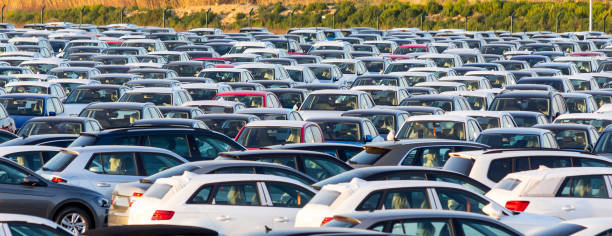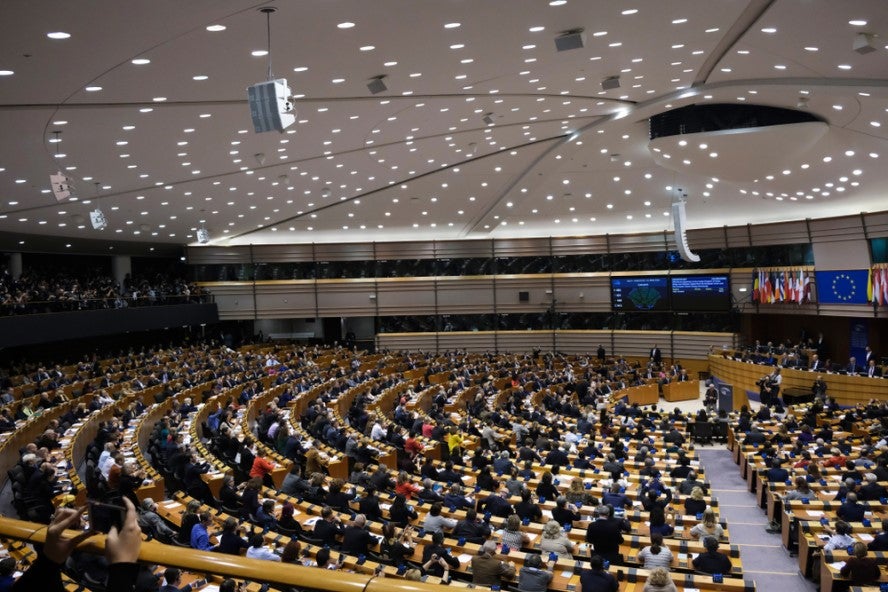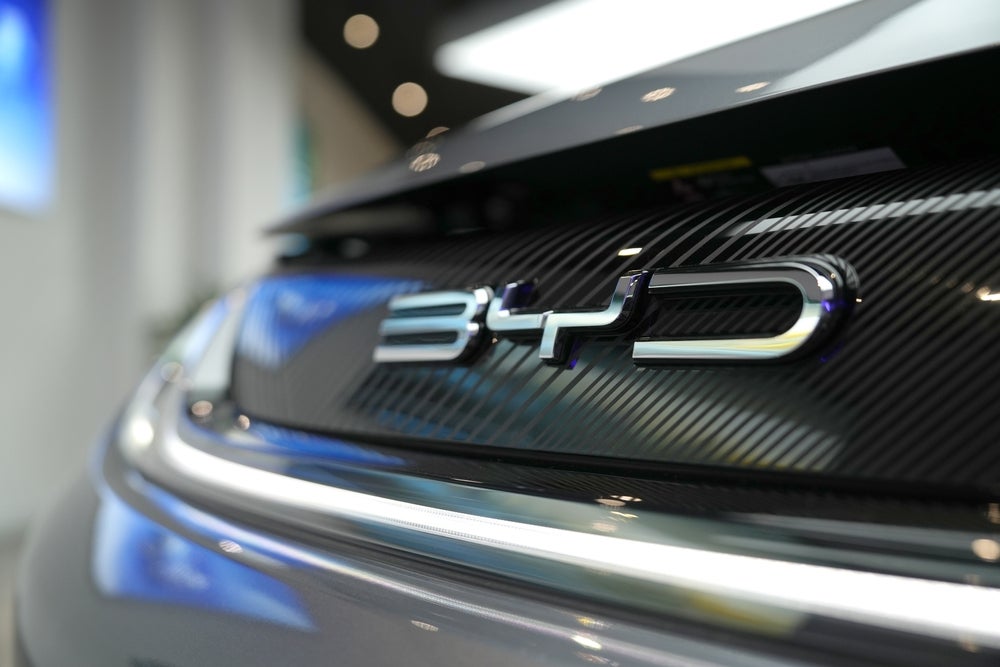
We are supposed to be living at the dawn of the electrification age. With the 2035 deadline looming, and pressure from governments, environmental groups and even consumers, the age of the internal combustion engine is drawing to a close and the electric car will reign supreme.
Yes, demand has been a little constrained by supply chain issues, including the chip crisis, but as those issues have eased, uptake has increased. During the first six months of 2023, we saw electric car registrations increase by 32.7%, which in real terms accounts for 37,719 more cars than the same period in 2022.
But while the market as a whole is up 18.4%, the fact is that EV market share growth has not been as impressive. The EV share of the market has gone from 0.9% in 2019 to 4.4% in 2020, 7.2% in 2021 and 14.4% last year, nearly doubling year on year. But this year the EV share of the market seems to be stable at only 16.1%.
That progress means the government target of 22% for next year seems like a long way off, let alone the goal of 100% market dominance by 2035.
As Consulting Director of consulting and advisory service, Finativ, Simon Harris points out, “I don’t think there has been a slowdown in sales, but there has been a slowdown in demand.”
While Harris argues the sector is “ticking along” at a reasonable rate from a sales or registration perspective, that activity is mainly due to shortening waiting lists.
How well do you really know your competitors?
Access the most comprehensive Company Profiles on the market, powered by GlobalData. Save hours of research. Gain competitive edge.

Thank you!
Your download email will arrive shortly
Not ready to buy yet? Download a free sample
We are confident about the unique quality of our Company Profiles. However, we want you to make the most beneficial decision for your business, so we offer a free sample that you can download by submitting the below form
By GlobalData“They are fulfilling longstanding orders with existing registrations and sales numbers,” Harris says. “I don’t think we are at the point where there are vast numbers of unsold EVs standing around. Tesla is the only manufacturer where that might have been the case, triggering their price reductions. But they have now reported growth in their sales and registrations, probably driven by those reductions.”
Auto Trader has collected data data suggests a complex picture of how the market is developing.
“We have the broadest single view of EVs, and as our data highlights, the market is incredibly nuanced,” says Ian Plummer, Auto Trader’s Commercial Director. “We’ve been seeing buyer interest in new electric vehicles soften on our marketplace from around autumn of last year, and by spring it had dropped by almost two-thirds since the beginning of 2022, due in part to the rising cost of living, higher borrowing costs, and the well-documented hike in energy prices.”
“But the biggest impact is on used EV values.,” Harris adds.
Some have argued that while EVs have achieved a foothold on the market, a lot of that progress has been due to the company car sector, which has been incentivised to transition to electric vehicles thanks to the benefit-in-kind scheme which will continue until 2025. However, with no similar incentives for private owners, there is a case to be made that the market is limiting itself to company cars and leasing.
Private EV registrations are in a slump, down 20% year-on-year and accounting for less than 50% of total new car registrations. This year, of Volkswagen’s ID 5s, only 13% have been sold to private customers, 21% of Tesla Model Ys have gone to private customers, and only 41% of Ford Mustang Mach-Es.
In its report “The Road to 2030”, Auto Trader has pointed out a 65% year-on-year fall in the number of enquiries sent to retailers about EVs, meaning that EV enquiries make up only 9% of all enquiries, compared with 27% of enquiries in the same period of the previous year.
A luxury item?
One of the proposed obstacles to more mainstream growth for the EV sector has been a straightforward one – price.
“Battery-powered Electric Vehicles in general have, until recently, been something for early adopters,” Harris tells us. “They have not been mainstream. The average price point of a BEV is far ahead of a diesel equivalent of even the same model.”
This situation has arguably been exacerbated by the manufacturers themselves, whose portfolios have been geared towards the high end of the market. Jaguar produces only one electric vehicle, a premium product, and they are not the only ones.
“The supply of electric vehicles, certainly in Europe, comes primarily from premium manufacturers such as Volvo and Mercedes,” says Harris. “They started with relatively affordable vehicles like the Renault, but growth volume has not come from that sector. I think the combination of high price, early adopter barriers and limited supply means the peak is now over and we are starting to see electric vehicles normalising with the entire motor sector.”
Plummer also points to affordability as an issue for the growth of the EV sector.
“The market for new EVs is still hampered by a lack of affordable choices, with the number of new electric models between £20,000 – £30,000 – the most popular price bracket on Auto Trader – actually decreasing over the last 12 months,” Plummer points out. “On average a new EV costs circa 37% more than a petrol or diesel alternative, a figure which hasn’t changed since mid-2022. It means that for the majority of buyers, a brand-new EV is simply out of reach.”
In good company
But while price is an issue, Harris insists the demand for EVs is still there, albeit, more as an ambition for the future than an immediately planned purchase.
“People still have BEV on their shipping lists, there are people saying it will be their next car or the car after next,” Harris says. “Markets and governments have been incentivising EV purchases with subsidies but they have concluded that there is no point in subsidising something that is in short supply.”
As we have already pointed out, the exception to the rule so far has been company vehicles, which are subject to a generous tax incentive.
“That niche is still growing considerably because it is more tax efficient,” Harris argues. “What’s interesting is that there is the growth in BEV company cars is being driven not by employees being provided a car by their employer, but instead by being directed to a financial services provider for a contract hire. It is not like days of old when companies would take on fleets of vehicles for their employees.”
A matter of range
Price is not the only issue preventing the mass adoption of electric vehicles. The other big cause for hesitation among consumers is the simple matter of keeping their vehicle charged.
“Range anxiety is probably the biggest obstacle after price, driven by the ongoing challenge of providing charging infrastructure,” Harris says. “This issue is being addressed but not at a pace that can keep up with demand. That range anxiety and lack of charging infrastructure is also one of the drivers behind the relative fall in used BEV values.”
Used vehicles are becoming an increasingly prescient issue. When the very first EVs entered the market as used vehicles demand massively exceeded supply for new EVs. As used cars become more affordable, range rises up the list of priorities.
“People were happy to pay a premium for new vehicles, but now demand is easing,” Harris says. “Used prices are relaxing correspondingly and customers in the used car market are more likely to be private consumers who are more likely to be troubled by price. They are also more concerned with how to charge their vehicle if they don’t have off-road parking and charging facilities at home.”
Driving demand by 2035
This is why the Society for Motor Manufacturers and Traders has been advocating for the removal of 20% VAT on public charging, compared with 5% for home charging.
However, Harris still points to price as the biggest driver in the current market.
“There are not enough vehicles on the market,” he says simply. “Even manufacturers who sell non-premium vehicles still regard the EV version as a premium product. But someone looking for a Mini or a Fiat 500 is not looking to spend a lot of money.”
However, there are manufacturers who are not aiming for the premium market. Chinese manufacturers are set to have a big impact as they enter the market.
“That is not necessarily a good thing for the consumer or the market, but the demand will probably be met by Chinese supply,” Harris says. “Among OEMs, some are making a conscious decision not to compete at the lower price point. Mercedes is withdrawing its smaller models altogether, accepting they will sell fewer cars at a better profit margin.”
While there are reasons for hope, there are those who argue it is too little, too late.
“Thanks to the recent introduction of attractive finance offers by manufacturers, we are beginning to see consumer interest on our platform improve, however, we’re only just returning to previous levels,” Plummer says. “That’s a disappointing but reliable indicator of where sales are heading and they are not sufficient in what should be a period of rapid growth in adoption. Given the recent headlines on the 2030 ban, this isn’t surprising.”
Some businesses have moved to step in and encourage private consumers where they feel the government has failed to do. Fiat UK has introduced a £3,000 “E-grant” for anyone who buys the Fiat 500 EV. Meanwhile, the National Franchised Dealers Association (NFDA) has advocated for a reintroduction of the plug-in car grant (PiCG) which boosted early EV sales.
Harris, however, argues that a more nuanced approach is needed than simply throwing grants at the problem.
“There are lots of variables in play, there’s not a single thing that is going to turn the market around,” he says. “The question is does it need turning around?”
While there is a long way to go, Harris argues that despite the challenges, the automotive market is actually behaving the way that it should.
“This is arguably one of the rare occasions where the market is doing its job,” Harris says. “Used BEV became relatively very expensive when supply for new vehicles was restricted. You could say they were overpriced- certainly compared to their petrol or diesel used equivalent, but those prices are falling, reflecting reduced demand but making them more accessible to new people. It doesn’t necessarily require any subsidisation.”
Indeed, looking towards the future, Harris can see good a reason why the Government might feel ambivalent about funding the transition to EVs.
“Longer term, governments will say the more battery electric vehicles you have on the road the fewer fossil vehicles there are, and so tax revenues on fuel will be reduced,” he points out. “That revenue needs to be replaced. Do you want to subsidise something that is only going to reduce your duty revenue?”
Harris’s argument is that the government should not be pushing for widespread EV adoption until there are other supporting factors in place.
“If the government needs to invest in anything it is charging infrastructure and enabling the grid to provide electricity from renewable sources,” he insists. “There is a very long tail and I don’t think tinkering with subsidies around the purchase or financing of electric vehicles is really going to have an overall positive effect.”
It is a comment that would seem to be in line with the argument of the Society for Motor Manufacturers and Traders that VAT on public charging should be removed. However, this too would have an impact on government revenues.
Consumer advocate group FairCharge has calculated a VAT drop of this kind would cost the Treasury £38 million a year in revenues, but it also argues that that is small change compared to the £2 billion it has cost the government to peg fuel duty back against agreed multipliers.
“Our political leaders are swayed by siren voices saying that abandoning green policies is the solution to our problems,” says Plummer. “That’s a dangerous path to go down and those voices both underestimate what can be achieved and further harm the mass adoption of electric vehicles by spreading uncertainty and confusion.”
Pointing to Auto Trader’s data, Plummer argues that while the market is immature, there is also room for nuance. Just like Harris says, the market may be behaving the way it should.
“Our data shows that consumer appetite for second-hand EVs is in a far more robust position, with current levels of consumer demand on Auto Trader up over 50% on this time last year,” he says. “This is reflected in the rapid growth in used electric sales, and an encouraging sign of more consumers identifying pre-loved EVs as a more affordable route into electric ownership. The influx of supply at the back end of last year has continued throughout 2023 which has meant a decline in used prices, and a welcome boost in choice for car buyers.”
House of Lords launch inquiry into EVs
Finance set to drive record high of £23bn in UK used car sales for 2023







